

Miranda, being a super smart and compassionate friend (and runner/climber/orthotist), has agreed to share with you a beginner’s guide to selecting healthy footwear in a guest post.
Key Elements of Minimalist Shoes
by Miranda C
If you are curious about barefoot or minimalist shoes, this post is for you. As someone who runs in barefoot sandals, I often find myself explaining the benefits of wearing them to people wondering why the heck I’m running in sandals. A lot of times the opportunity pops up as people are jogging by yelling, “You forgot your shoes!” Or, “You need to be careful running in those!” This post is the explanation I wish I could share with all of those passersby.
What is a Minimalist Shoe?
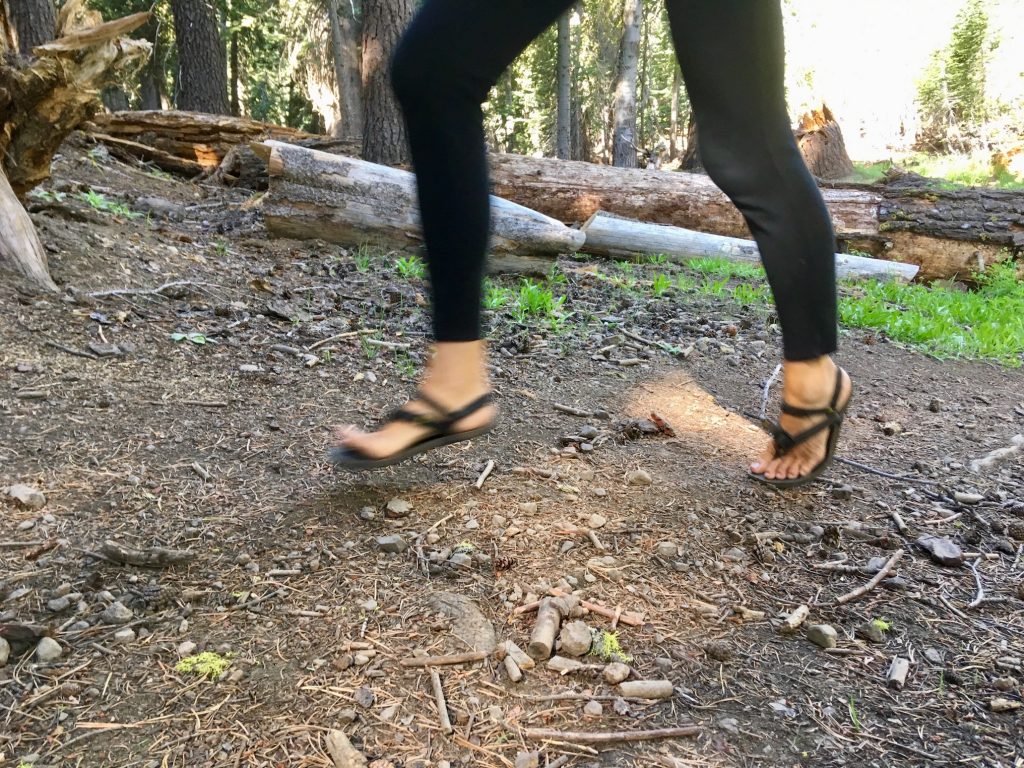
I, like a lot of people, first came across the idea of “going barefoot” in the book “Born to Run” by Christopher McDougall. Now, as somebody who wore orthotics for flat feet as a kid and then later became an orthotist, that idea blew my mind.
I’m not suggesting that orthotics are always contraindicated. They definitely have their place. However, a healthy person wearing an orthotic without plans to wean off of it, is similar to a person taking ibuprofen long-term to treat pain without investigating the underlying reason for the pain. When orthotics do the work to support joints or arches, the muscles surrounding these areas weaken.
1. Wide Toe Box
This allows your toes to splay out like they naturally do when you are barefoot. With a wider splay comes more stability! And it also decreases your risk for toe deformities like hammertoes, bunions, and Morton’s Neuroma.
2. Zero Heel Drop
Zero heel drop essentially means a flat sole. This encourages a balance between the anterior and posterior muscles of your leg. Most shoes, even if not considered “heels” have some sort of heel. Running shoes typically have about a 12mm heel drop from heel to toe. Wearing shoes with even a slightly wedged heel puts your Achilles’, calves, and hamstrings in a shortened position and consequently tilts your pelvis forward. Having zero heel drop shoes allows for better alignment of your hips and consequently your spine and neck.
3. Thin Flexible Sole

Having a sole that is thin and flexible allows you to feel the ground you are stepping on. This sensory feedback can improve your nerve health and proprioception (knowing where your foot is in space), which is essential for balance. It also promotes natural foot movement. A lot of shoes have a thick, rigid sole, which limits range of motion when walking. Less cushioning also tends to make you tread lightly. Think of jumping on a pillow. You have to land harder on the pillow than you would on a piece of paper to feel stable, solid ground beneath you.
4. No Arch Support
This also allows for natural movement of the foot. Arch supports lock your foot into a single position all throughout the gait cycle. Pronation has a bad rap, but it is actually the most stable position of the foot while walking or running and some pronation is desirable for shock absorption. Having the freedom to move your foot can improve your intrinsic muscles, which support your natural arch and decreases your risk for plantar fasciitis.
5. Secure to the Foot
In other words, not flip flops. If your shoe has all the tenets of a minimalist shoe, but doesn’t stay on your foot, then you most likely are having to alter your gait to walk. Next time you wear flip flops, pay attention to how your
toes are gripping the shoe so it doesn’t fall off. This is not a natural gait pattern and can lead to toe problems.
Transition Time
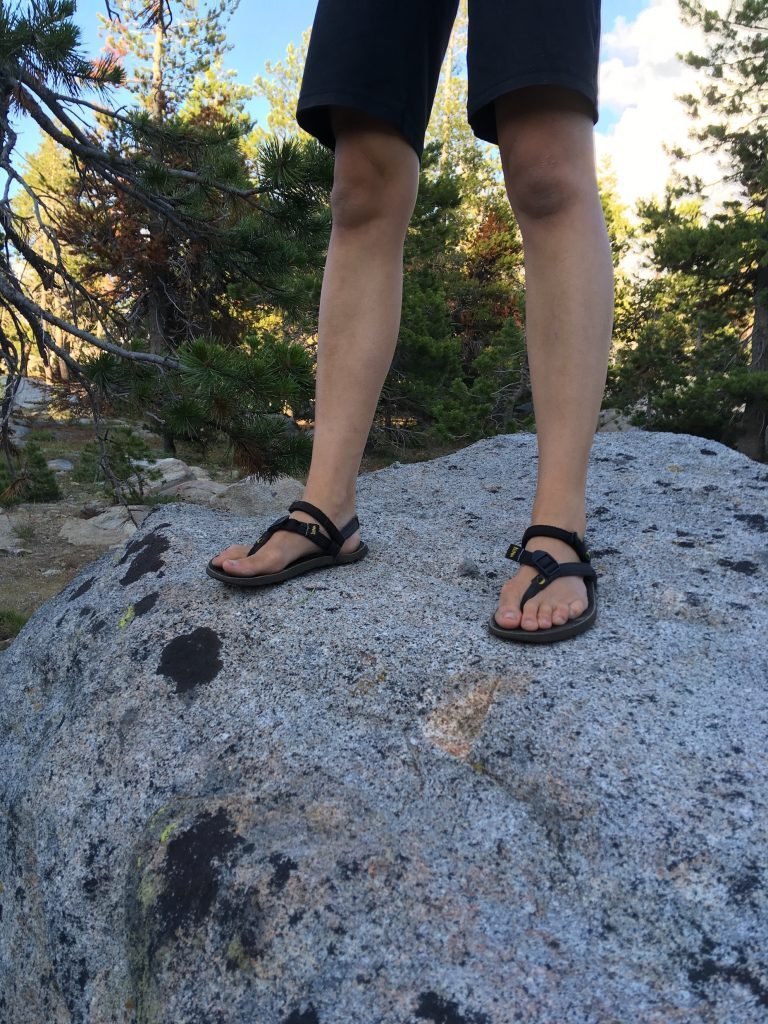
The first time I donned a minimalist sandal I was blown away with how it felt like I was walking barefoot…but with shoes. They felt secure on my foot, my toes had plenty of room, I had full range of motion. It was amazing.
Of course getting started walking and moving around in barefoot shoes does not always come naturally for everyone. In fact, it can seem very unnatural. If your feet have spent their whole lives in “casts” (aka, rigid, supportive shoes) they may be overwhelmed with the amount of work that is suddenly required of them.
Transitioning to minimalist shoes takes time and a lot of effort. If you haven’t worn them before, you may need to consult a professional before transitioning. Before I knew much about feet, i unknowingly jumped from a super supportive shoe to Nike Free’s (a more minimalistic shoe) and found myself with plantar fasciitis from not transitioning properly. It is essential to start out wearing minimalist shoes for a short time and gradually increase in time and distance. Every body is different and as a result everyone’s journey to being barefoot will look different.
Transitioning to barefoot is more than just a matter of switching shoes. It may mean switching gait patterns, working on your alignment and/or strengthening your muscles through different exercises and texture walking. But don’t worry, there are plenty of great resources to help you through this process, such as Katy Bowman’s excellent work and The Foot Collective.
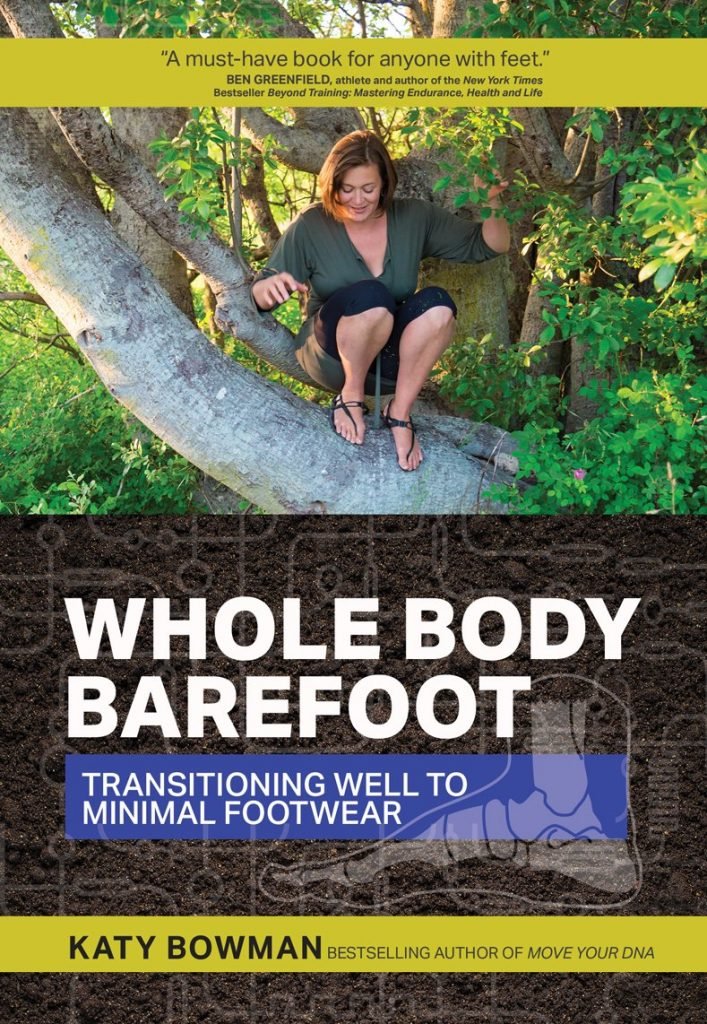
Since completely and properly transitioning to minimalist footwear, I can go around the house with no shoe and no support and be just fine. In fact, I can go much longer periods standing or walking before my feet tire out. My balance has improved. And I’m doing my feet a big service by not squishing them into a restrictive toe box.
So, if you are wondering if YOU can go barefoot because you wear orthotics or because you’ve had plantar fasciitis, join the club. Don some minimalist shoes and see for yourself how amazing your feet work when they move the way nature intended.
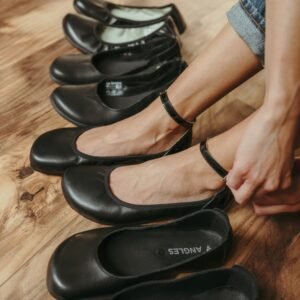
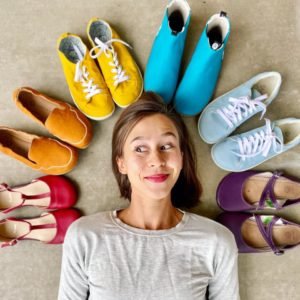

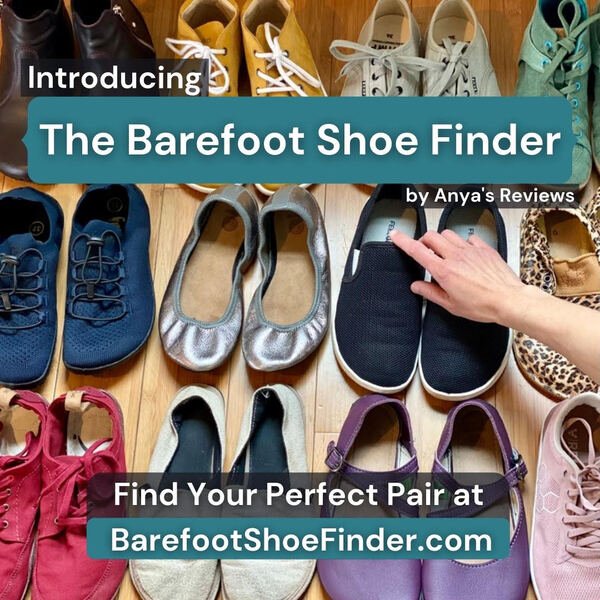
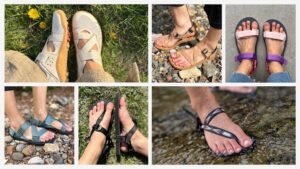
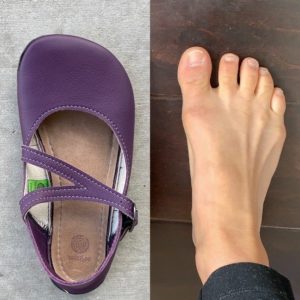
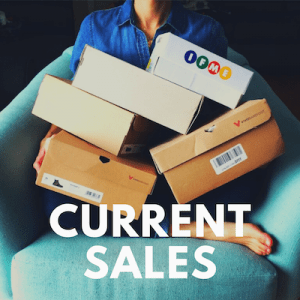

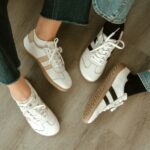




4 thoughts on “What Exactly is a Barefoot or Minimalist Shoe?”
What shoe would you recommend for aerobics or walking?
There are lots of options! Altra, Lems Primal 2, and Oesh are great options if you need a little bit more cushion. If you don’t, Softstar, Feet, Tadeevo and Be Lenka all have excellent simple sneakers that work for both walking, exercise and every day.
I have Morton’s neuroma in both feet and extra cushion in the ball of foot is what I need. What do you recommend for a dress boot and sandal?
Hey there! There are some brands that have a more cushioned sole, but still provide all the other benefits. You can find them listed here:
https://anyasreviews.com/best-barefoot-minimalist-shoe-brands-beginners/
Softstar’s dress shoes have a little bit of extra cushion as well, if you don’t see anything you like in that list. And lastly, you can use a NorthSole insole inside a thinner shoe for added cushion – that is what I did in my Vivobarefoot shoes for a while as I adjusted to thin soles.